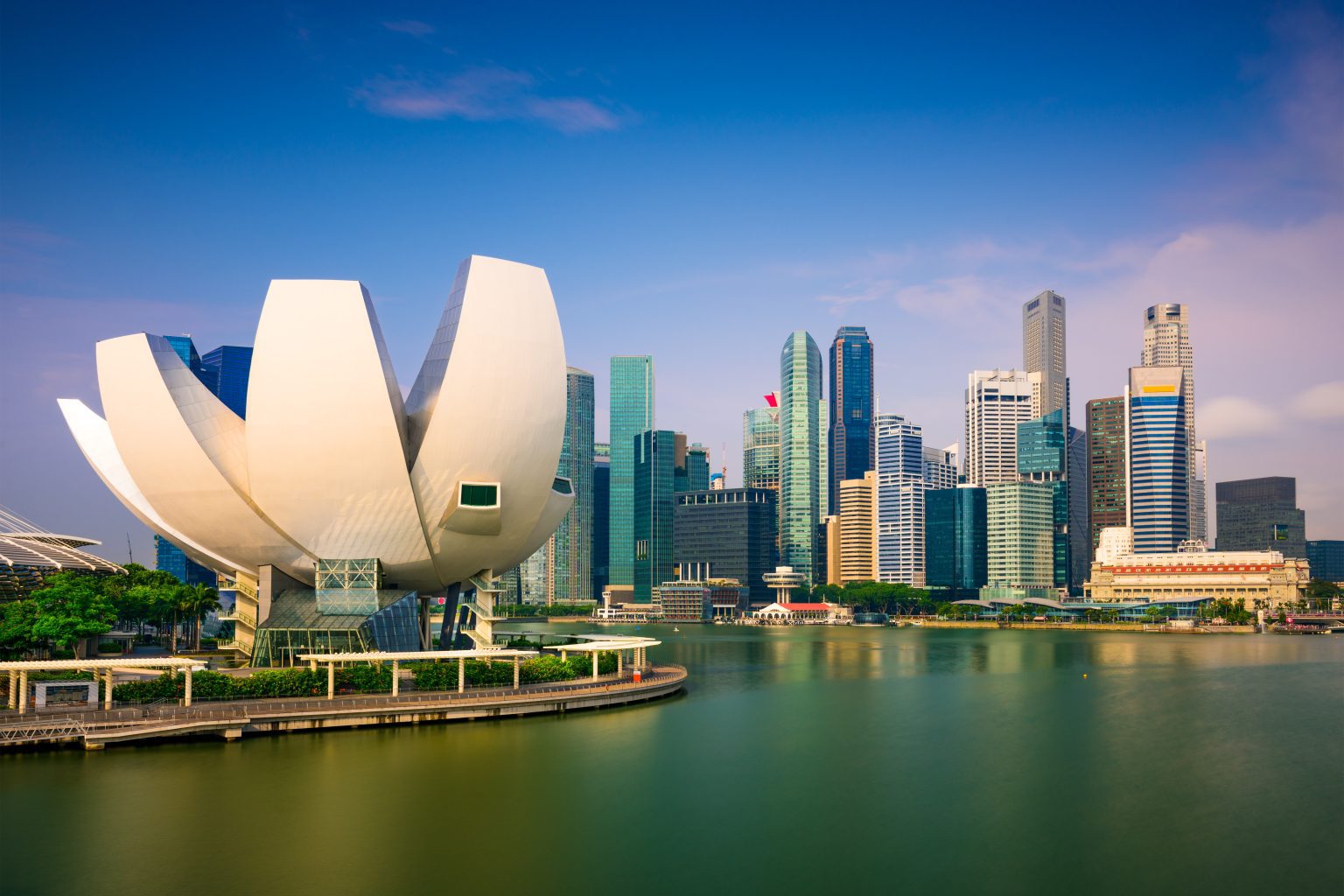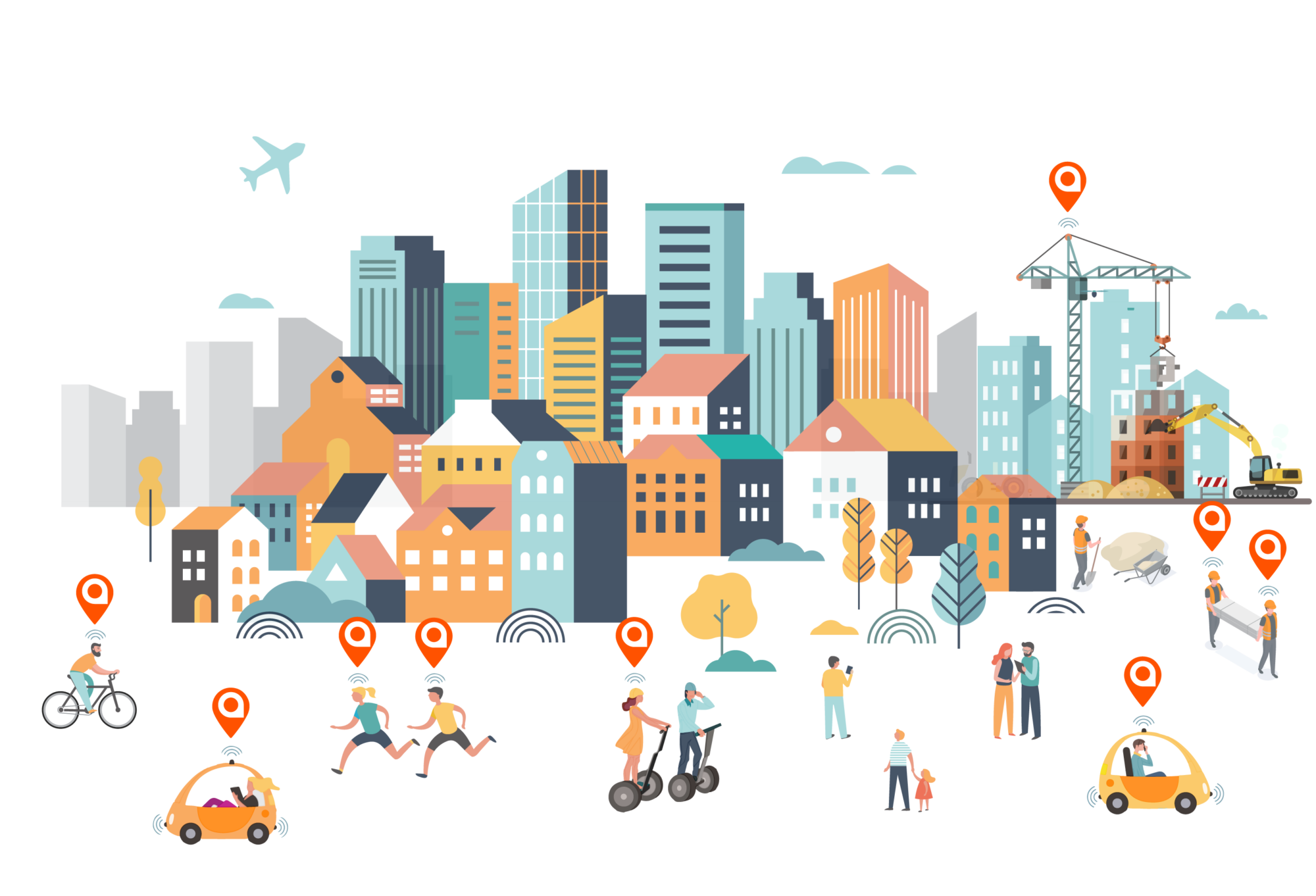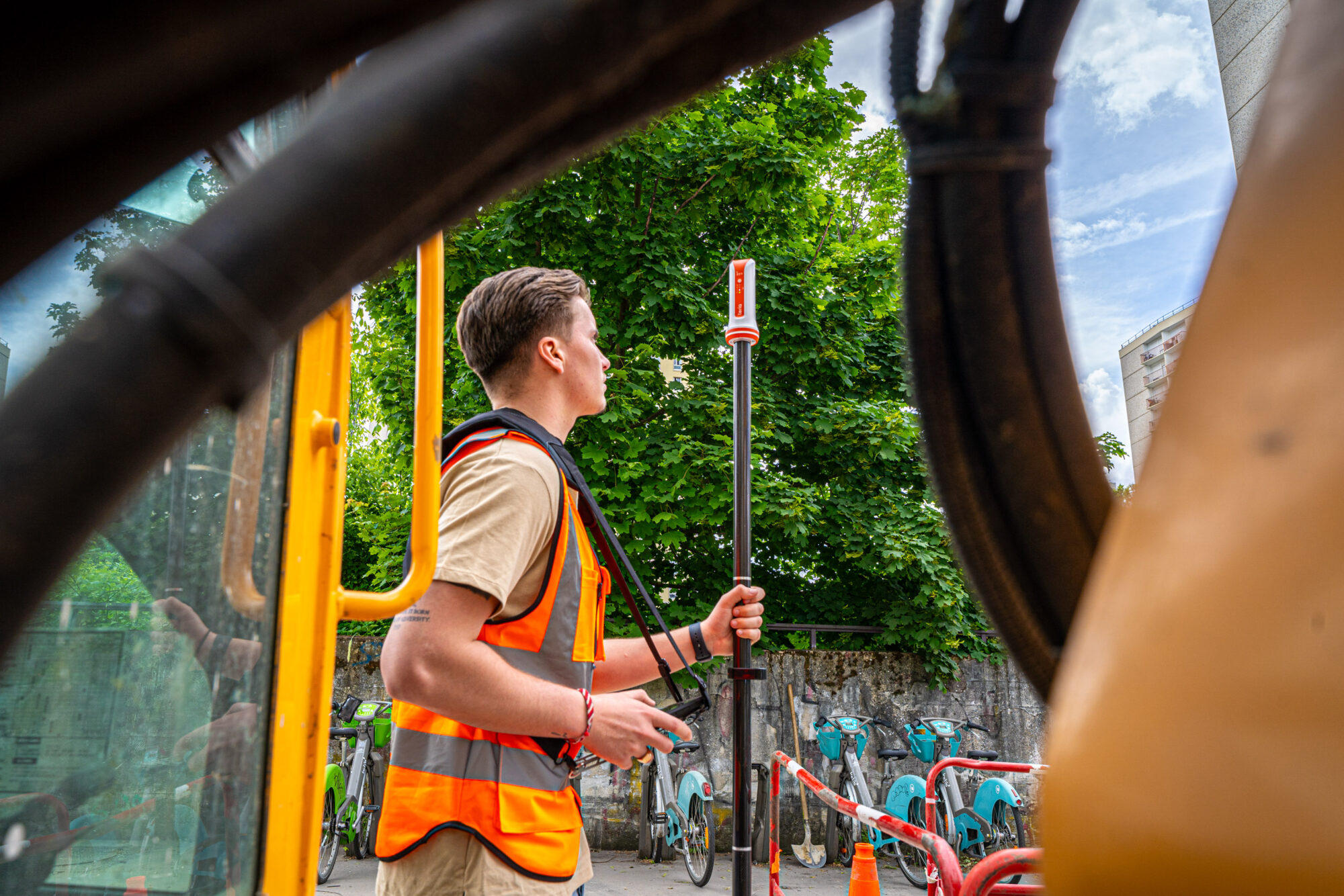- Smart city or the connected city
- Smart city or the connected city
- Smart city or the connected city
- Smart city or the connected city
- Smart city or the connected city
- Smart city or the connected city
- Smart city or the connected city
- Smart city or the connected city
- Smart city or the connected city
- Smart city or the connected city
Smart city or the connected city

GNSS at the service
for connected cities
The smart city, or “connected city”, is gradually being put in place and is preparing for the explosion in urban needs. Over the next ten years or so, urban population density is expected to increase by 30%1. By 2030, this will represent 60% of the world’s population.
Faced with this urban concentration, cities are going to have to adapt quickly to meet the needs of their growing populations while dealing with environmental and logistical constraints.

SMART CITY,
WHAT IT IS ?
The idea of an “intelligent city” emerged in 2005 during a meeting between Bill Clinton and John Chambers, the CEO of Cisco. B. Clinton launched the challenge of making cities smarter and more sustainable through digital technologies.
A new concept in urban development, the smart city is a city that integrates new technologies throughout its territory.
The aim is to improve the quality of life of residents by making the city more adaptive and efficient.
The scope of this new way of managing cities includes: buildings; networks (water, electricity, gas, telecoms); transport (public transport, intelligent roads and cars, car-sharing, “soft” mobility – cycling, walking, etc.).2
To support this transformation, the synergy between these information and communication technologies (ICTs) and GNSS is essential. ICTs store, analyse and display the data collected so that cities can use it to manage assets and resources efficiently.
1 Source: Bloomberg & McKinsey survey on mobility in 2030 – 2 Source CNIL – Smart city definition
URBAN MOBILITY
WITHIN THE SMART CITY
Urban mobility refers to all the daily journeys made by the inhabitants of a city to get to their place of work, leisure or shopping.
It takes into account various parameters such as the modes of transport chosen, the length of the journey, the time spent on transport, etc.
The use of the car and traditional public transport are still in the majority. However, new thinking on urban mobility has emerged with a view to improving the quality of life of city dwellers in many respects (safety, economic, sustainable, practical, inclusive, health-related, etc.).
Users are turning more and more to environmentally-friendly, soft mobility, adopting more committed modes of individual travel: electric bikes and scooters, unicycles and hoverboards. These are all means of locomotion appreciated by city dwellers, who are genuinely committed to soft mobility.
Car use is still the preferred mode of transport, and car-sharing is another way of sharing mobility that is helping to reduce the number of private cars and congestion in city centres.
All these modes of transport have led to the emergence of free-floating, which involves making means of transport available to the public throughout the city, without docking stations (electric scooters and bicycles, electric cars and scooters). Complemented by an application and a precise geolocation service, free-floating is winning people over with its self-service loan service.
This new type of service offers greater freedom, mobility and flexibility, making it an ideal response to the ecological challenges we face.


SINGAPORE,
A SUCCESS STORY
Singapore tops the list of the most famous smart cities. It stands out for its green mobility and energy management.
In 2014, Singapore launched its global ” smart nation ” programme with the aim of equipping the city with reliable, widespread connected intelligence. Sensors have been installed throughout the city and on street furniture (litter bins, roads, lampposts, etc.) to analyse urban behaviour, improve traffic flow and optimise travel.
When it comes to green mobility, Singapore remains the perfect example of the smart city, with electric car-sharing and free transport on a sliding scale. Out of a population of 5.6 million, only 15-20% have their own car and 45% use the public transport network on a daily basis.
To achieve this, Singapore has equipped itself with a permanent GNSS network capable of transmitting NRTK corrections such as TERIA.

THE GNSS, A KEY PLAYER
FOR SMART CITIES
Geolocation is an integral part of society. Today’s city dwellers want to know not only what’s happening, but also where it’s happening. All this data is recorded along with the spatial coordinates collected by GNSS receivers.
Among the tools on the market, smartphones and car navigation systems have low-precision receivers. High-precision receivers are used more for professional applications.
The range of geolocation tools and techniques
3 TO 10 CM
RTK / SSR accuracy
for engineering, mapping and scientific users
10 TO 100 CM
Precision DGNSS / PPP
for tracking and general navigation of autonomous vehicles
5 TO 10 M
Precise navigation
Smartphones and tablets for consumer use
Each application has its own geolocation accuracy requirements. An autonomous vehicle’s positioning system must be accurate to within 10 cm. In the public works sector, centimetre-level accuracy is required.
So all the services and tools that make up the intelligent city depend in one way or another on GNSS.
The example of public transport:
The use of GNSS technology would enable optimal tracking of vehicles and better fleet management.

Numerous uses would be made possible, such as improved priority at traffic lights, precision stopping at platforms, precise information on timetables, simplified equipment maintenance and many other applications dedicated to this type of transport.
GUIDE, an accredited geolocation testing laboratory, evaluates positioning systems in real environments. Its main mission is to characterise and certify the performance of geolocation solutions, improve their efficiency and assess the levels of security and integrity essential to position measurement.
The GUIDE laboratory has carried out test campaigns on board tramways in Bordeaux and Toulouse, confirming the robustness of GNSS technology in urban environments with centimetric position measurements.
Constantly evolving needs

As smart cities develop, they need better GNSS signal availability. Galileo, the European satellite system, provides this availability. The result: greater independence, redundancy, precision and, ultimately, safety in the smart city.
For some years now, the need for positioning has been increasingly focused on constrained environments in mobile or indoor applications (geolocation of self-service scooters in building lobbies or other indoor locations).
GNSS has limitations in this area because of the lack of line-of-sight satellites. 5G and GNSS complement each other perfectly to guarantee high-precision positioning.
Hybridization tests are currently under way to standardise this technology. Research work on these subjects is being carried out by the major international telecoms players.
TERIA at the service of the intelligent city
TERIA meets the precision location requirements of all receivers with a moving GNSS antenna.
For all services requiring precise geolocation (public transport, autonomous vehicles, drones, etc.), TERIA offers highly accurate corrections.
On the technical side, a very fast convergence time is ensured to enable a return to accuracy after a loss of precision due to major masks (tunnel, car park, link with an indoor positioning system, etc.).
TERIA can combine NRTK and PPP-RTKcorrections.
Our technology guarantees the highest availability and enables precise positioning with integrity calculation.
It provides receivers with two independent correction streams to calculate two redundant precise positions.
TERIA takes part in the “Blue Parking” operation
With its premium precision geolocation service,
TERIA optimises access to parking spaces reserved for people with disabilities.
“ Blue Parking ” is an operation launched by Géomètres-Experts that offers high-precision geo-referencing of parking spaces reserved for people with reduced mobility throughout France and the French overseas departments and territories.
TERIA’s involvement in this programme is an additional contribution to the development of the intelligent city and is fully in line with thecompany’s social and environmental commitment.


Partners such as Géomètres-Experts, TERIA & Géofoncier can provide their expertise to improve mobility for people with disabilities.

SMART CITY APPLICATIONS
Modern cities already have network sensors and communication interfaces operating via satellite links.
The services offered to the public are rich and varied, and are only waiting to be developed or perfected: optimising road safety, traffic fluidity, intelligent vehicle guidance, maximising transport, circumstantial virtual tolls, waste management, air quality, smart roads, safety, intelligent parking, etc.
The transformation of cities into smart cities continues to progress, and GNSS has a key role to play. The accuracy of GNSS receivers is set to increase further with the launch of new GNSS constellations. This will provide even greater accuracy in the most challenging environments.
The TERIA network, an expert in high-precision real-time geolocation, is at the heart of the development of smart cities.







